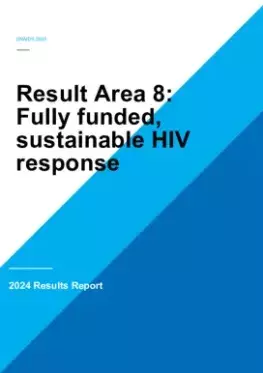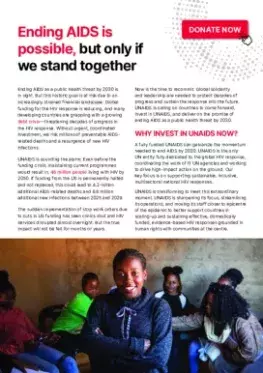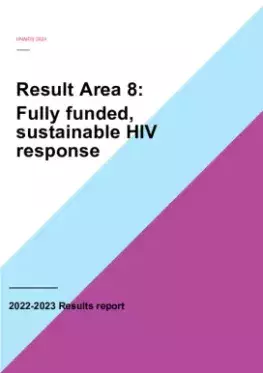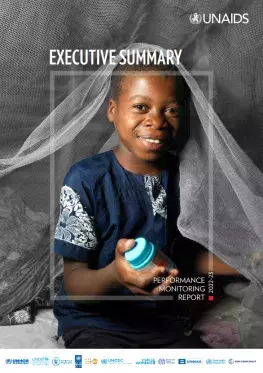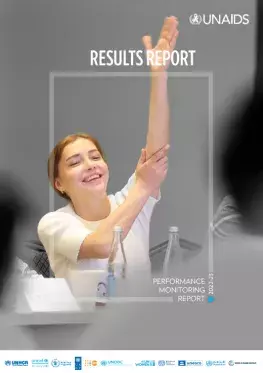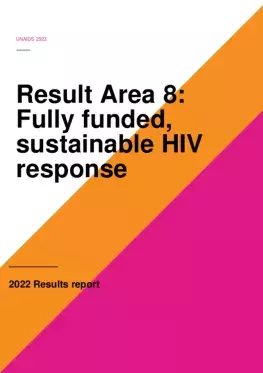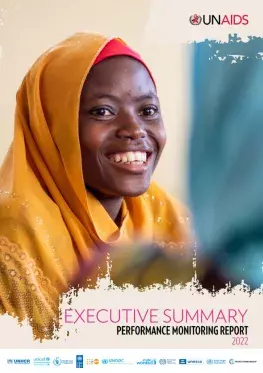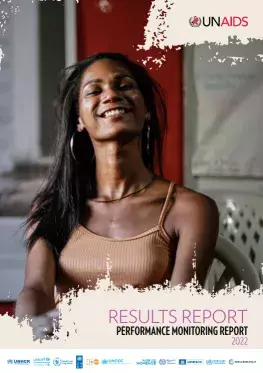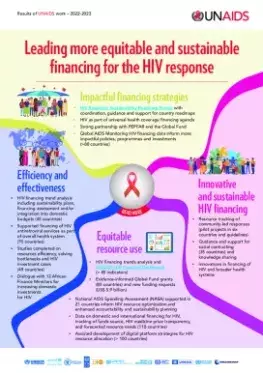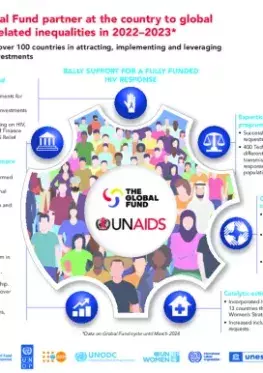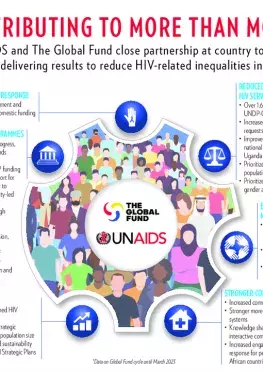In 2024, the Joint Programme greatly intensified efforts to support countries to ensure the sustainability of their HIV responses. It supported countries’ efforts to improve resources use efficiency and effectiveness in their HIV response such as support to 59 countries with guidance to improve allocative efficiency, resolve implementation bottlenecks, recent HIV investment case/other analysis. The World Bank, Secretariat and other partners used their analytical expertise to help countries by employing mathematical optimization modelling and leveraging innovative tools and analytics to (re)design their programming to maximize allocation of resources and service delivery.
The Joint Programme in collaboration with PEPFAR and other partners, led a reinvigorated HIV response sustainability agenda & the new HIV Response Sustainability Primer framework and approach to ensure the sustainability of the HIV response. It does by identifying the necessary transformations in programmatic, policy and financial dimensions by and beyond 2030 with a focus on five sustainability domains: (a) political leadership and commitment; (b) enabling laws and policies; (c) sustainable and equitable financing; (d) science-driven, effective and high-impact HIV services and solutions; and (e) systems built to deliver them. This approach to sustainability with effective global and country coordination and technical guidance has revitalized multiple countries’ commitments to achieve HIV response sustainability, including by developing roadmaps and goals for achieving and sustaining HIV response impact by and beyond 2030, while pursuing self-reliance. These sustainability roadmaps also serve as the foundation for development funding request to donors.
Extensive support from the Joint Programme enabled countries to access resources from the Global Fund, PEPFAR and other donors and optimize their evidence-informed allocation and use for most impact. For the entire Global Fund Cycle 7, the Joint Programme coordinated support for 56 funding requests for country-prioritized programmes (including 10 in 2024 only) for a total value of over US $ 6.8 billion (2024–2026). Efforts also intensified to mobilize increased domestic financing for national HIV responses and for overall health systems with other partners, Global Fund and PEPFAR
The Joint Programme remains the prime source of domestic and international HIV financing from national health/AIDS spending assessments, which shapes most impactful investments including Global Fund. In the latest available reporting round for the Global AIDS Monitoring (GAM), which the Secretariat coordinates, 39 countries submitted data on domestic HIV budgets, while 57 countries reported on HIV expenditures by source.
Examples of other Joint Programme’s leadership, strategic analysis and catalytic role for more equitable and sustainable access to HIV services for all including through efficiencies and innovations include assistance to over 90 countries in improving access to health technologies and knowledge sharing on demand forecast for HIV medicines and diagnostics with over 20 pharmaceutical companies and 30 diagnostic manufacturers.


